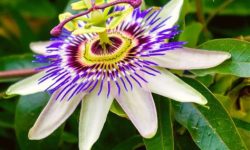The History and Origins of Sencha Tea
Introduction to Sencha Tea
Sencha tea, a beloved beverage with a rich history and numerous health benefits, has captured the hearts of tea enthusiasts around the world. From its ancient origins in Japan to its contemporary variations, sencha tea has evolved throughout centuries, delighting tea drinkers with its unique flavors and aromas. In this blog post, we will explore the fascinating journey of sencha tea, from its development and traditional brewing techniques to its modern variations and the countless ways it can positively impact our health. Join us as we delve into the captivating world of sencha tea and uncover its secrets.
Introduction to Sencha Tea
Sencha tea is a popular type of Japanese green tea that has gained recognition and appreciation worldwide. Derived from the young leaves of the Camellia sinensis plant, sencha tea is known for its vibrant green color, refreshing taste, and numerous health benefits. In this blog post, we will delve into the fascinating world of sencha tea and explore its origins, production methods, traditional brewing techniques, and contemporary variations. So, grab a cup of sencha tea and join us on this journey of discovery!
Sencha tea has been consumed in Japan for centuries, making it an integral part of Japanese culture and tradition. The ancient origins of sencha tea can be traced back to the 8th century, during the Tang Dynasty in China. It was brought to Japan by Buddhist monks who traveled to China to study Buddhism. These monks not only brought back their newfound knowledge but also seeds and methods for cultivating and harvesting tea plants.
Over time, Japan developed its own distinct tea culture, with sencha tea becoming one of the most beloved and widely consumed varieties. Unlike other types of green tea, sencha tea is made from leaves that are exposed to sunlight during the growth process. This sunlight exposure gives sencha tea its characteristic vibrant green color and unique flavor profile.
Ancient Origins of Sencha Tea
Sencha tea, a popular type of green tea in Japan, has ancient origins that trace back over several centuries. Its history and cultural significance make it a fascinating topic to explore. Let’s delve into the ancient origins of Sencha tea and uncover the secrets behind this traditional Japanese brew.
The exact origins of Sencha tea can be traced back to the 8th century during the Heian period in Japan. It was during this time that the Chinese method of steaming tea leaves to produce green tea was introduced to Japan. However, it wasn’t until the 17th century, during the Edo period, that Sencha tea gained popularity among the general population. Prior to this, only matcha tea, a powdered form of green tea, was consumed by the Japanese elite and Buddhist monks.
The cultivation of Sencha tea is closely tied to the tea-growing regions in Japan. Areas such as Shizuoka, Kyoto, and Aichi prefectures are renowned for their high-quality Sencha tea production. The unique climate, fertile soil, and ideal elevation in these regions contribute to the flavor profile and overall quality of the tea leaves.
- Flavor: Sencha tea is appreciated for its delicate, grassy flavor with hints of sweetness. The steaming process used during production helps to preserve the natural flavors and antioxidants present in the tea leaves.
- Aroma: The aroma of Sencha tea is often described as fresh, vegetal, and slightly seaweed-like. It is a distinct characteristic of this particular type of green tea.
- Appearance: The dry leaves of Sencha tea are typically needle-shaped and vibrant green in color. When brewed, the tea liquor exhibits a pale green hue.
| Region | Notable Characteristics |
|---|---|
| Shizuoka Prefecture | Produces the majority of Sencha tea in Japan. Known for its rich umami flavor. |
| Kyoto Prefecture | High-quality tea production with a focus on traditional cultivation and processing methods. |
| Aichi Prefecture | Known for its unique tea leaves with a deep, rich taste and pleasant aroma. |
Sencha tea has a rich cultural heritage in Japan and is often prepared and served during traditional tea ceremonies. It embodies the principles of harmony, respect, purity, and tranquility that are associated with Japanese tea culture. The ancient origins of Sencha tea and its continued popularity to this day highlight the enduring tradition and appreciation for this beloved Japanese beverage.
Development of Sencha Tea Production
The development of Sencha tea production has a rich history that dates back centuries. Sencha tea is a highly popular and well-loved tea in Japan, known for its vibrant green color, refreshing taste, and numerous health benefits. The process of producing Sencha tea has evolved over time, influenced by various factors such as technological advancements, cultural practices, and consumer preferences.
One of the earliest methods of producing Sencha tea can be traced back to the 17th century during the Edo period. At this time, Sencha tea leaves were steamed and then dried, resulting in a unique flavor profile and distinctive characteristics. This traditional steaming process, known as “asamushi,” is still utilized today and is essential in bringing out the natural flavors and aromas of the tea.
Over the years, as the demand for Sencha tea grew, producers began experimenting with different techniques to improve the quality and efficiency of production. One significant development was the introduction of the “fukamushi” method in the 19th century. This technique involves steaming the tea leaves for a longer duration, resulting in smaller leaf particles and a richer, more full-bodied taste. The fukamushi method appealed to those who preferred a bolder and more intense flavor profile in their tea.
In the modern era, advancements in tea production technology have further contributed to the development of Sencha tea production. With the introduction of machinery, the process has become more streamlined and efficient, allowing for larger-scale production without compromising the quality. However, despite these technological advancements, many tea producers still practice traditional hand-picked harvesting methods to ensure the highest quality tea leaves.
Traditional Brewing Techniques of Sencha Tea
Sencha tea is a popular Japanese green tea known for its vibrant flavor and numerous health benefits. While there are various ways to brew tea, traditional brewing techniques have been passed down through generations in Japan. These techniques not only enhance the taste of sencha tea but also preserve its unique aroma and natural properties.
One of the most important aspects of traditional sencha tea brewing is the water temperature. To extract the delicate flavors of the tea leaves, it is recommended to use water that is about 70 to 80 degrees Celsius. Boiling water can scorch the leaves and result in a bitter taste. It is also crucial to use freshly filtered water to ensure the purity of the brew.
Another key technique is the steeping time. Sencha tea leaves should be steeped for approximately one to two minutes, depending on personal preference. Steeping for too long can make the tea taste bitter, while not steeping enough may result in a weak flavor. It is advisable to experiment with different steeping times to find the perfect balance.
- Choose high-quality sencha tea leaves
- Preheat the teapot or teacup
- Add the desired amount of tea leaves
- Pour the hot water over the leaves
- Let the tea steep for one to two minutes
- Strain the tea into a teacup
- Savor and enjoy!
Additionally, the brewing vessel and utensils play a significant role in the traditional brewing process. Many tea enthusiasts prefer using clay teapots, known as kyusu, to brew sencha tea. The porous nature of the clay enhances the flavors and aromas of the tea. Meanwhile, a bamboo tea scoop, known as a chashaku, is used to measure and transfer the tea leaves accurately.
Table: Steeping Guidelines for Sencha Tea
| Water Temperature | Steeping Time |
|---|---|
| 70-80 degrees Celsius | 1-2 minutes |
Health Benefits of Sencha Tea
Sencha tea is a type of Japanese green tea that has gained popularity for its numerous health benefits. This tea is made from young leaves of the Camellia sinensis plant, which are steamed and dried to preserve their natural properties. Sencha tea is renowned for its rich content of antioxidants, polyphenols, and catechins, which contribute to its many health benefits.
One of the key health benefits of sencha tea is its ability to boost the immune system. The antioxidants present in this tea help to neutralize harmful free radicals in the body, reducing cellular damage and strengthening the immune system’s response to pathogens. By regularly consuming sencha tea, individuals may experience a lower risk of common infections and enjoy improved overall health.
Additionally, sencha tea has been linked to weight management and improved heart health. The catechins in this tea are known to promote fat oxidation and increase metabolism, leading to potential weight loss benefits. Moreover, studies have suggested that these catechins may help improve cholesterol levels and reduce the risk of cardiovascular diseases such as heart attacks and strokes.
- Boosts immune system: Sencha tea is rich in antioxidants that help strengthen the immune system by neutralizing harmful free radicals.
- Weight management: The catechins in sencha tea may aid in weight loss by promoting fat oxidation and increasing metabolism.
- Improves heart health: Regular consumption of sencha tea may help lower cholesterol levels and reduce the risk of heart diseases.
In addition to these benefits, sencha tea is also believed to support mental clarity and focus. The natural properties of this tea, including its amino acid content, assist in calming the mind and improving concentration. Sencha tea is often enjoyed as a soothing and refreshing drink that can provide a natural energy boost without the jitters or crashes associated with caffeine.
In conclusion, sencha tea offers numerous health benefits due to its rich antioxidant and catechin content. From boosting the immune system to supporting weight management and heart health, this Japanese green tea has gained recognition for its potential positive effects on overall well-being. Incorporating sencha tea into your daily routine can be a simple yet effective way to take care of your health and enjoy a delicious, flavorful beverage.
Contemporary Variations of Sencha Tea
Sencha tea is a popular type of Japanese green tea known for its fresh and grassy flavor. Over the years, this traditional tea has been transformed into various contemporary variations to cater to different tastes and preferences. These modern twists on the classic Sencha tea offer unique flavors and aromas that can enhance your tea-drinking experience. In this blog post, we will explore some of the contemporary variations of Sencha tea and discover the exciting world of innovative tea flavors.
When it comes to contemporary variations of Sencha tea, there are several options to choose from. One popular variation is flavored Sencha tea, where different herbs, fruits, or flowers are blended with the tea leaves. This creates a delightful infusion of flavors, giving the tea a new and exciting taste. For example, you can find Sencha tea infused with citrus fruits like lemon or orange, adding a zesty twist to the traditional green tea.
Another contemporary variation is roasted Sencha tea, also known as Hojicha. In this process, the tea leaves are gently roasted, resulting in a unique and toasty flavor. Roasted Sencha tea has a rich and nutty taste, with a pleasant smokiness that sets it apart from the traditional Sencha. This variation is perfect for those who enjoy a slightly bolder and more robust tea flavor.
Frequently Asked Questions
What is Sencha tea?
Sencha tea is a type of green tea that originated in Japan. It is known for its vibrant green color and refreshing taste.
Where did Sencha tea originate from?
Sencha tea has its ancient origins in Japan, where it has been enjoyed for centuries.
How is Sencha tea produced?
The production of Sencha tea involves steaming and rolling the leaves, which helps to preserve their natural flavors and nutrients.
What are traditional brewing techniques for Sencha tea?
To brew Sencha tea traditionally, use water of around 70-80°C (158-176°F) and steep the leaves for 1-2 minutes.
What are the health benefits of Sencha tea?
Sencha tea is rich in antioxidants and is believed to have various health benefits, including boosting metabolism and supporting heart health.
Are there any contemporary variations of Sencha tea?
Yes, there are many contemporary variations of Sencha tea available, such as flavored Sencha teas and blends with other ingredients like fruits or herbs.
Can Sencha tea be enjoyed cold?
Yes, Sencha tea can be enjoyed cold as well. It is often brewed and then chilled or served over ice for a refreshing summer beverage.



